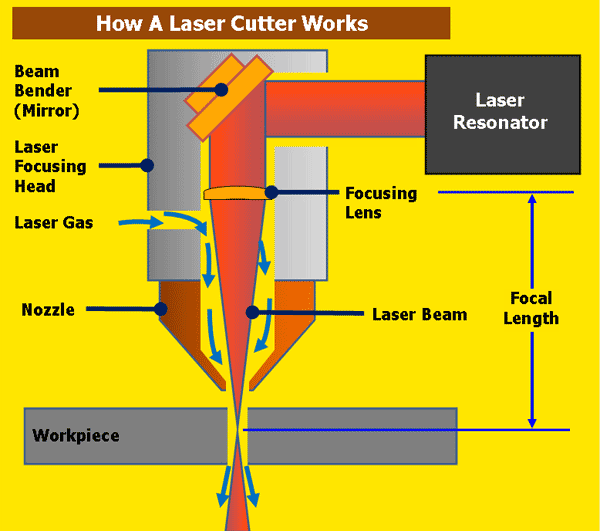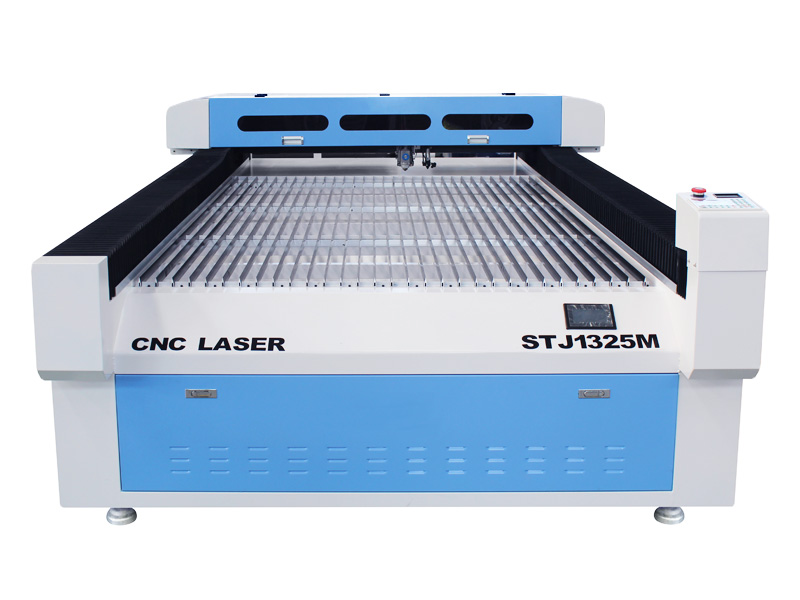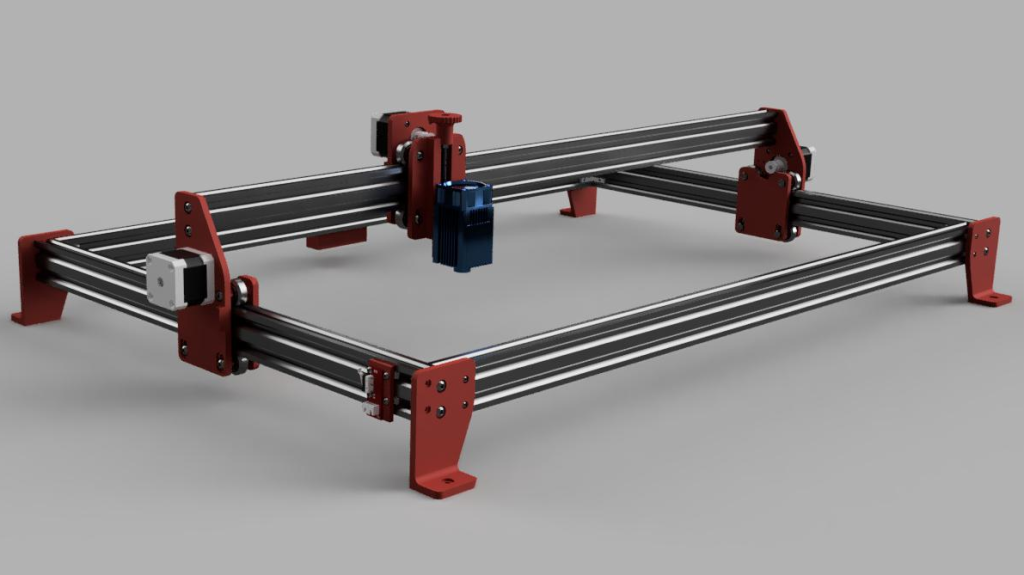Table of Contents
Paragraph 1:
If you’re looking for precision in your woodworking projects, then a CNC router is a must-have tool. However, even the most advanced machine can lose calibration over time. That’s where laser calibration comes in – a process that ensures your CNC router is accurate, reliable, and ready to tackle any project you throw at it.
Paragraph 2:
In this article, we will explore the steps involved in laser calibrating your CNC router. From preparing your machine to performing the calibration process, we’ll provide you with all the information you need to get the most out of your CNC router. So, let’s dive in and take a closer look at how to laser calibrate your CNC router!
- First, power on your CNC router and the laser calibration tool.
- Place the laser tool at the center of the router spindle and adjust the height until it is aligned with the spindle.
- Position the laser tool in each corner of the router bed and mark the position of the laser dot on the table.
- Connect the CNC router to your computer and open the calibration software.
- Input the measurements of the laser dot positions and the software will automatically adjust the machine’s calibration.
- Run a test cut to confirm that the calibration is accurate.
How to Laser Calibrate CNC Router?
Calibrating a CNC router is a crucial step in ensuring its accuracy and precision. Laser calibration is one of the most effective methods to calibrate a CNC router. In this article, we’ll take you through the step-by-step process of how to laser calibrate a CNC router.
What is Laser Calibration?
Laser calibration is the process of measuring the accuracy and precision of a CNC router using a laser. The laser is used to measure the distance between the spindle and the workpiece. This distance is then compared to the programmed values to determine the accuracy and precision of the CNC router.
To perform a laser calibration, you will need a laser measurement device, such as a laser interferometer, and a calibration software.
Benefits of Laser Calibration
– Accurate measurement of machine tool positioning and movement
– Increased productivity and quality
– Reduced downtime due to less machine error
– Reduced tool wear and breakage
Step-by-Step Process of Laser Calibration
Step 1: Clean the Machine
Before starting the calibration process, make sure to clean the machine thoroughly. Remove any debris, dust, or oil from the machine. Also, check for any signs of wear and tear that may affect the calibration process.
Step 2: Mount the Laser Measurement Device
Mount the laser measurement device on the machine. Make sure it is secure and aligned properly. The laser should be directed towards the spindle.
Step 3: Start the Calibration Software
Start the calibration software and follow the instructions to set up the measurement parameters.
Step 4: Run the Calibration Program
Run the calibration program, which will move the machine through a series of motions while the laser measures the distance. The calibration program will record the measurements and compare them to the programmed values.
Step 5: Analyze the Results
Analyze the calibration results to determine the accuracy and precision of the machine. If the results are within the acceptable range, the machine is considered calibrated. If not, adjustments will need to be made to bring the machine into spec.
Laser Calibration Vs Traditional Calibration
Laser calibration is more accurate and precise compared to traditional calibration methods. Traditional calibration methods rely on manual measurements, which can be affected by human error. Laser calibration, on the other hand, is automated and provides more accurate and consistent results.
Conclusion
Laser calibration is an effective method for calibrating a CNC router. It provides accurate and consistent results, which can help increase productivity and quality. By following the step-by-step process outlined in this article, you can laser calibrate your CNC router and ensure its accuracy and precision.
Frequently Asked Questions
Here are the most commonly asked questions about how to laser calibrate CNC router.
What is laser calibration?
Laser calibration is the process of measuring and adjusting the position and movement of the CNC router using a laser. This method is used to ensure that the machine is operating accurately and precisely. Laser calibration involves measuring the machine’s position and movement and comparing it to the intended position and movement as specified in the machine’s software.
The laser calibration process involves checking the accuracy of the machine’s axes, including the X, Y, and Z axes. It also involves checking the accuracy of the machine’s cutting tools, such as the spindle and the cutting head. Once the machine has been calibrated, it should be able to produce accurate and precise cuts and shapes.
Why is laser calibration important?
Laser calibration is important for ensuring that the CNC router is operating accurately and precisely. Without calibration, the machine may produce inaccurate cuts and shapes, which can result in wasted materials and time. Calibrating the machine using a laser ensures that it is operating at its highest level of accuracy and precision, which can help to improve the quality of the finished product and reduce waste.
In addition, laser calibration can help to extend the life of the machine and its components. By ensuring that the machine is operating accurately and precisely, it can help to reduce wear and tear on the machine’s components, which can help to extend their lifespan and reduce the need for repairs and replacements.
How do I prepare for laser calibration?
Before beginning the laser calibration process, it is important to ensure that the machine is clean and free of debris. This can help to ensure that the laser is able to accurately measure the machine’s position and movement. It is also important to ensure that the machine is properly lubricated and that all of its components are in good working order.
In addition, it may be necessary to make adjustments to the machine’s cutting tools or other components before beginning the calibration process. This can help to ensure that the machine is able to produce accurate cuts and shapes once it has been calibrated.
Can I perform laser calibration myself?
While it is possible to perform laser calibration yourself, it is generally recommended that this process be performed by a professional. Laser calibration requires specialized equipment and expertise, and it can be difficult to achieve accurate results without proper training and experience.
If you do decide to perform laser calibration yourself, it is important to follow the manufacturer’s instructions carefully and to take all necessary safety precautions. It is also important to be patient and to take your time during the calibration process, as rushing can lead to inaccurate results.
How often should laser calibration be performed?
The frequency of laser calibration depends on a number of factors, including the type of machine, the frequency of use, and the types of materials being cut. In general, it is recommended that laser calibration be performed at least once per year, or more frequently if the machine is being used frequently or cutting particularly challenging materials.
It is also a good idea to perform laser calibration whenever the machine is moved or if any significant changes are made to its components or software. This can help to ensure that the machine is operating accurately and precisely at all times.
In conclusion, laser calibration is a crucial step in ensuring the accuracy and precision of your CNC router. By following the steps outlined in this guide, you can achieve optimal performance and reduce the risk of errors and inaccuracies in your work.
Remember to always take the necessary precautions when working with lasers, and to thoroughly test and fine-tune your calibration settings before beginning any projects. With practice and patience, you can become a master of CNC router calibration and achieve the highest quality results in your work.
In summary, laser calibration is a valuable tool for any CNC router user looking to achieve optimal performance and accuracy. By investing time and effort into this process, you can ensure that your machine is operating at its full potential and producing the best possible results. So don’t wait – get started on your laser calibration journey today!
Request a quote today!
[contact-form-7 id="1578" title="Contact form"]
Please compress the file into a ZIP or RAR file before uploading. Alternatively, send through your RFQ by email.
enquires@unitymanufacture.com





